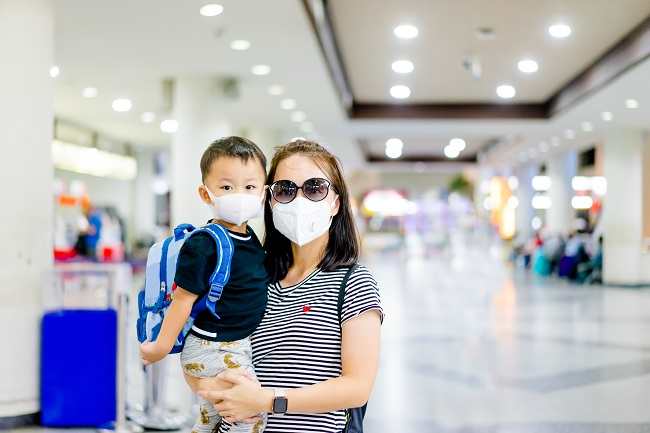Looks Similar, Know the Difference between Corona Virus Symptoms and the Common Flu
Lately, the public has been shrouded in concern over the Corona virus outbreak. Because the Corona virus infection that attacks the respiratory system has symptoms similar to the common cold, but can be fatal. So, what distinguishes the common cold from Corona virus infections?
Both the common cold and Corona's disease are both caused by a virus that attacks the human respiratory tract. However, the two viruses are from different groups and have different characteristics.

The viruses that cause flu come from the rhinovirus group. This virus spreads from human to human and most often attacks children or adolescents. Rhinovirus infections can occur throughout the year, but most often in the rainy season.
Differences in Common Flu Symptoms and Corona Virus Infection
The following are differences in symptoms from the common cold and Corona or COVID-19 virus infections that you need to know about:
Common flu
Flu usually occurs when rhinoviruses attack the respiratory tract. Generally, complaints that arise come from the nose and throat (upper respiratory tract). The symptoms are as follows:
- Sneeze
- Nasal congestion and runny
- Sore throat
- Mild headache
- Cough
- Fever (rare)
These symptoms usually only appear 1-3 days after exposure to the virus from other people who are sick.
<==COVID-19
Just like rhinovirus, Corona virus also infects the respiratory tract. Therefore, people affected by Corona virus infection can experience symptoms similar to flu. Even so, the Corona virus that is currently being endemic is more likely to cause complaints in the lower respiratory tract.
There are 3 main symptoms that can appear in COVID-19 patients, namely:
- High fever
- Cough
- Shortness of breath
In severe cases, COVID-19 infection can cause serious complications, such as acute respiratory distress syndrome, severe pneumonia (pulmonary infection), pulmonary edema, and malfunction of organs, such as the kidneys.
Treatment of Flu and Corona Virus Infection
Treatments for flu and Corona virus infections cannot be compared, because the two diseases are very different indeed. The following is an explanation of the treatment of flu and Corona virus infections:
Common flu
Flu generally can heal itself within 4–9 days. The better our immune system, the faster the body will fight rhinovirus. Therefore, the doctor will advise the patient to rest, and eat, and drink enough water.
Meanwhile, to relieve the flu symptoms doctors will usually give:
- Chlorpheniramine and pseudoephedrine This combination of cold medicine can be consumed to relieve complaints of nasal congestion and runny nose. Chlorpheniramine works by blocking the histamine compound that causes swelling of the nasal arteries, while pseudoephedrine will shrink the dilated blood vessels due to histamine.
- Paracetamol and ibuprofen
Both of these medicines can be used to treat cold symptoms accompanied by a low-grade fever. Both paracetamol and ibuprofen are available in various brands, and are very easy to find in pharmacies or drug stores. - Combination of paracetamol, chlorpheniramine, pseudoepherine, and guaifenesin
If you have a cold accompanied by fever, cough with phlegm, and runny nose, you can take cold medicine in combination with paracetamol, chlorpheniramine, pseudoephedrine, and guaifenesin to relieve these symptoms.
<==COVID-19
Until now, no treatment or vaccine has been found that is really able to overcome or prevent COVID-19 infection. However, COVID-19 symptoms that are like the common cold can be alleviated with cold medicine.
Although no vaccine has been found that can prevent Corona virus infection, you can minimize the risk of getting this infection by:
- Wash your hands with soap and water for at least 20 seconds.
- Use a mask for any outdoor activities or in public places.
- Increase drinking water.
- Get enough rest.
- Do not touch your eyes, nose and mouth with dirty hands.
- Avoid contact with people who are coughing and feverish.
Corona virus infection can cause symptoms that are mild to very severe and life threatening. Symptoms of a mild Corona virus infection can indeed be similar to symptoms of a common cold. Therefore, you need to be more observant in recognizing the different symptoms of COVID-19 from the common cold, based on the explanation above.
If you experience flu symptoms, especially those that have not healed for more than one week and are accompanied by a high fever, consult a doctor immediately to determine the cause.
Label : Health
Comments
Post a Comment